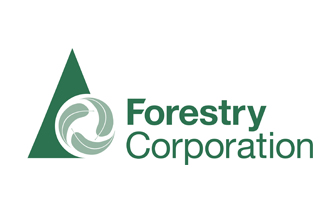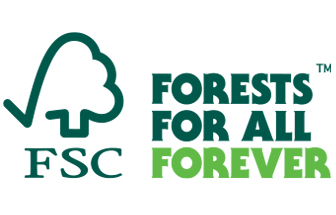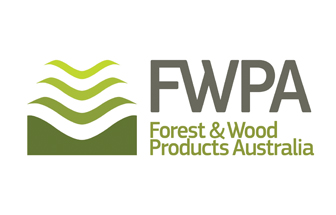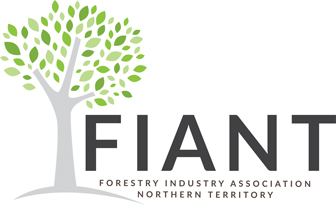TOURISM, ART, HEALTH AND ENVIRONMENTAL GOALS
AS MASTERPLAN REVEALED FOR BAGO STATE FOREST
Cutting of the ribbon at the masterplan reveal.
AFTER years of careful planning, interrupted by bushfire, floods and a global pandemic, the Bago State Forest Nature-Based Tourism Enhancement program was launched last week with the reveal of its long-awaited Masterplan.
The ‘Bago State Forest – Snowy Valleys Tourism Upgrade Program’ Masterplan was shared at a ceremony at Pilot Hill Arboretum in Bago State Forest, hosted by the Forestry Corporation of NSW.
Over 70 invited guests were on hand to show support for the Masterplan reveal, which details planned upgrade works at 5 visitor sites in Bago State Forest, located within the NSW Snowy Valleys, close to the townships of Tumbarumba and Tumut.
Developed under the NSW Government Regional Growth and Environment Tourism Fund, the Masterplan aims to deliver growth in the local and regional tourism economy through improved forest-based visitor experiences incorporating art, health and wellness, and environmental projects.
New visitor facilities, walking trails, signage and interpretation, timber sculptural elements and environmental restoration within Bago State Forest are key elements of the plan.
“Bago State Forest has an incredibly diverse landscape and is a fantastic part of the Snowy Valleys,” said Brendan Grimson, Forestry Corporation partnerships leader – Southern NSW.

The wellness walk will welcome visitors.
“We are incredibly excited to be launching this unique project, built on the principles of ‘Caring for Community’ and ‘Caring for Country’. Traditional Owner culture and heritage, art and sculpture, visitor health and wellness, showcasing local hardwood and softwood timber, are all equally important elements of proposed works,” said Mr. Grimson.
“Bago State Forest also supports large areas of sensitive Montane Peatlands. This project aims to enhance the visitor experience in those areas whilst also delivering restoration of degraded peatlands.”
“A strong multi-disciplinary team brought together by design underpins the Bago State Forest Masterplan. Partners The Mulloon Institute, NSW Health, Sculpture by the Sea, The Connective Co., Planet Ark, and Tumut Brungle Local Aboriginal Land Council, all on board.”
Jenni Wines, Bushfire/Disaster Recovery Clinician, said Murrumbidgee Local Health District was excited to be a partner in the Bago project.
“We are now starting to view nature as an important preventative healthcare and self-care model, with enormous community reach. We are bringing clients to Pilot Hill Arboretum, using the facilities and walking trail as a therapeutic session,” said Ms. Wines.
David Handley AM, founding CEO and artistic director of Sculpture by the Sea, said the Bago State Forest project afforded the opportunity to extend their successful Snowy Valleys Sculpture Trail.
“Bago State Forest is a fantastic part of the Snowy Valleys which offers a very different experience for visitors to the Snowy Valleys Sculpture Trail. Our three Bago project sites, our “Sculpture Forest,” is perfectly positioned in the middle of the existing Sculpture trail, giving the visitor 3 unique experiences all within a very short drive,” said Mr. Handley.
“Forestry Corporation of NSW has been fantastic to work with, they welcomed us with opened arms right from the start.”
Bill McAllister, a Landscape Planner from The Mulloon Institute, agreed.“We are incredibly excited to be given the opportunity to be working with Forestry Corporation of NSW on the restoration of Montane Peatlands. One really important element of Montane Peatlands is that they store tonnes and tonnes of Carbon dioxide. This makes their restoration a positive step to tackling climate change,” said Mr. McAllister.
Dr Joe McGirr MP, Independent Member for Wagga Wagga, noted that the announcement was important for the Bago State Forest and for the local community as a whole. “The investment made here is going to greatly bolster tourism opportunities, leading to more jobs and economic benefits for the community.”
“This is a particularly special project in the wake of the 2019/20 bushfires. I hope it will help in the ongoing recovery of community – not only financially through tourism, but also emotionally through a regenerated, accessible landscape,” said Mr. McGirr.
“I am greatly pleased to see First Nations practices, culture and heritage being placed front and centre of the masterplan; an important consideration of respect, and leading to improved environmental, educational and cultural outcomes.”
Duty MLC for Wagga Wagga Wes Fang said the $300 million Regional Growth – Environment and Tourism Fund has backed projects that activate iconic tourist attractions, grow destinations, and drive economic growth by increasing overnight visitation and business activity in regional NSW.
“The Regional Growth – Environment and Tourism Fund is delivering tourism projects and infrastructure that unlock growth in our regions by attracting more visitors and tourists to our beautiful regional towns,” Mr Fang said.
“The program has funded over 60 projects across regional NSW and this project is a great example of what the fund is designed to deliver, I look forward to seeing the economic benefits it will produce for the region.”
Member for Albury, Mr Justin Clancy MP, said “This region was impacted in a devastating way by the bushfires, and much was lost, including the much-loved Sugar Pines,” said Mr. Clancy.
“I’m excited to see this masterplan launched, as the iconic Sugar Pines were a feature of tourism in the area. This collaboration with Sculpture by the Sea will literally see another iconic tourism project rise from the ashes.”
“This is how we come back from disaster. It has had an ongoing effect on the community as well as the forest, and this program and Masterplan will support sensitive environments whilst backing local tourism and hospitality businesses as they work hard to attract visitors and promote economic development and growth.”
The Bago State Forest Snowy Valleys Tourism Upgrade Program is made possible through $1,910,988 in funding from the NSW Government Regional Growth Environment & Tourism fund.










